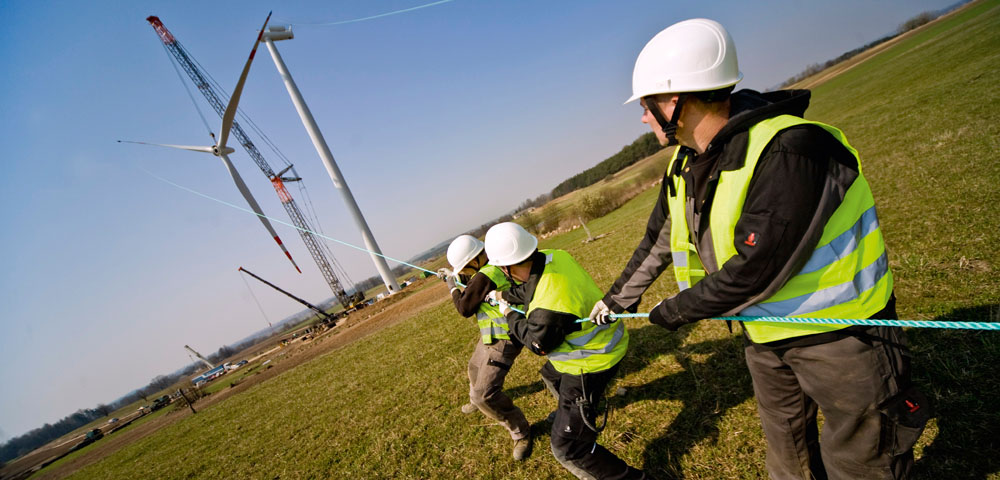
The rotor blade is one of the most expensive components of a wind turbine and it plays a key role for the efficiency of the system. With design lengths of over 80 meters, this component provides a benchmark for the use of lightweight materials. Faced with extreme stress levels on one hand and high cost pressures on the other, designers now have to come up with innovative developments in every area – from aerodynamic and structural designs and new manufacturing methods through to operational safeguards. Moreover, the dynamic stability of the overall system is also becoming an increasingly important factor and high-performance aero-elastic concepts will have to be developed to take this into account.
Design Techniques and Innovative Concepts
The Research Alliance Wind Energy (FVWE) uses the latest computational fluid dynamics (CFD) methods to design new types of load- and yield-optimized rotor blades. This relies on a continuous chain of design and calculation processes that take account of all relevant design aspects, from aerodynamics, aero-elastics and aero-acoustics through to the overall dynamics of the wind turbine. Using pitch actuators and passive twist-bend couplings, adjustment and control systems are now being developed for future rotor blade generations. Investigations are also being carried out into the integration of new sensor concepts into the rotor blade structure and the potential this may have for early damage detection and active load management. With the help of these technologies, the Research Alliance is preparing the ground for the cost-efficient manufacturing and operational reliability of even longer rotor blades.
Material Development and Manufacturing Techniques
Any further increase in the size of rotor blades will be limited by the existing choice of materials and manufacturing processes. Cost-intensive, fault-prone manual production methods offer obvious potential for improvement. Projects initiated by the FVWE involving the coordinated development of new materials in conjunction with the introduction of automated manufacturing stages are now laying the necessary foundations for manufacturing the next generation of rotor blades. These activities are also making use of the experience acquired from related sectors such as the aviation industry.
Validation and Measurement
A successful development process also requires extensive and detailed validation of the individual production steps, which also forms part of the certification process. To this effect, the FVWE provides an infrastructure that is setting international standards. Its state-of-the-art testing facilities can carry out all the necessary investigations, from secured material development and component and full-blade tests through to wind tunnel and field measurements. Experience-based expertise is channelled into the continuous improvement of the test methods so that the evolving requirements from OEM can be accommodated and tests can be carried out with the greatest precision in a cost- and time-efficient manner.
